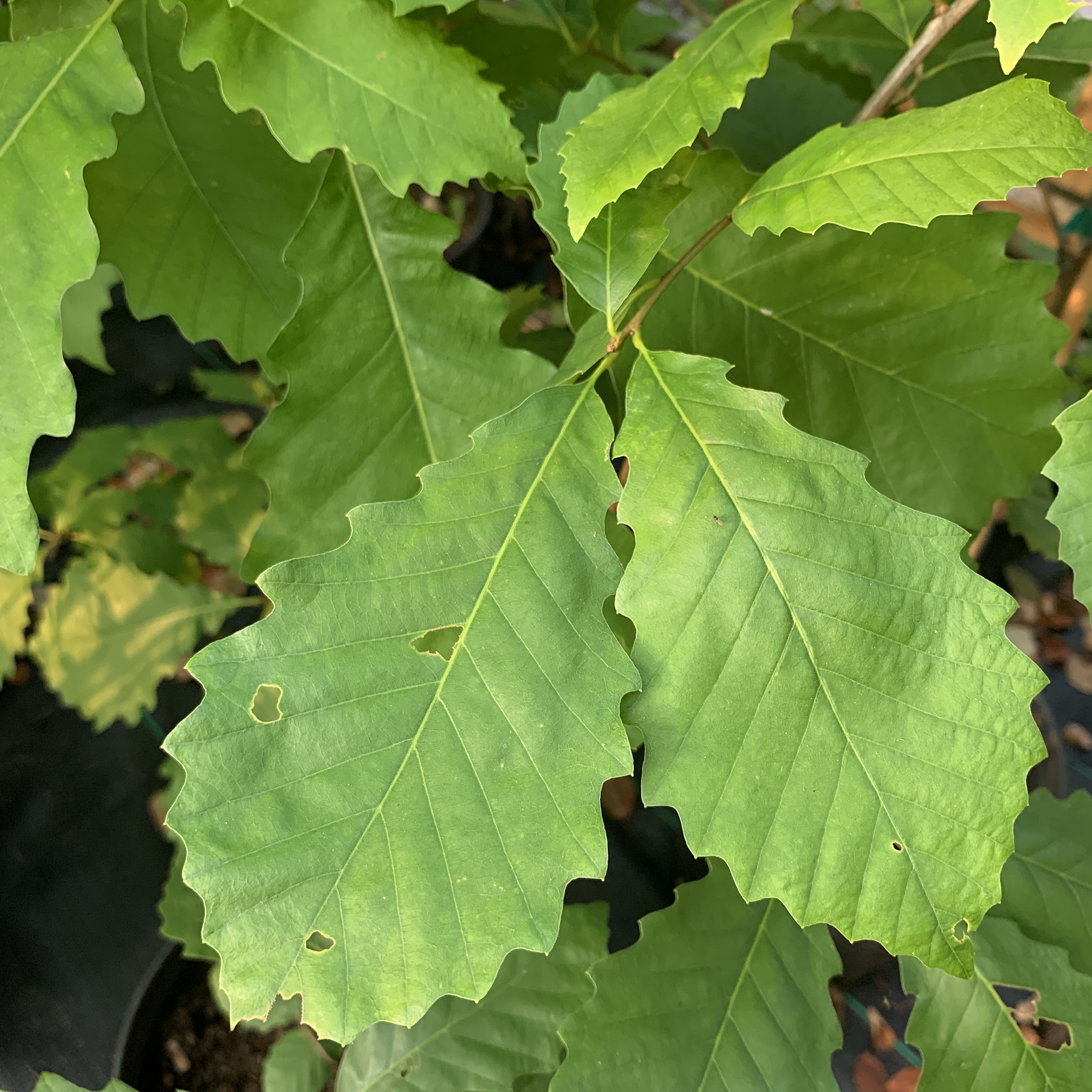Chinkapin
(Quercus muehlenbergii)

Description
Quercus muehlenbergii, the chinkapin or chinquapin oak, is a deciduous species of tree in the white oak group (Quercus sect. Quercus). The species was often called Quercus acuminata in older literature. Quercus muehlenbergii (often misspelled as muhlenbergii) is native to eastern and central North America. It ranges from Vermont to Minnesota, south to the Florida panhandle, and west to New Mexico in the United States. In Canada it is only found in southern Ontario, and in Mexico it ranges from Coahuila south to Hidalgo. Chinkapin oak is monoecious in flowering habit; flowers emerge in April to late May or early June. The staminate flowers are borne in catkins that develop from the leaf axils of the previous year, and the pistillate flowers develop from the axils of the current year's leaves. The fruit, an acorn or nut, is borne singly or in pairs, matures in one year, and ripens in September or October. About half of the acorn is enclosed in a thin cup and is chestnut brown to nearly black. Chinkapin oak is closely related to the smaller but generally similar dwarf chinkapin oak (Quercus prinoides). Chinkapin oak is usually a tree, but occasionally shrubby, while dwarf chinkapin oak is a low-growing, clone-forming shrub. The two species generally occur in different habitats: chinquapin oak is typically found on calcareous soils and rocky slopes, while dwarf chinkapin oak is usually found on acidic substrates, primarily sand or sandy soils, and also dry shales. Chinkapin oak is also sometimes confused with the related chestnut oak (Quercus montana), which it closely resembles. However, unlike the pointed teeth on the leaves of the chinkapin oak, chestnut oak leaves generally have rounded teeth. The two species have contrasting kinds of bark: chinkapin oak has a gray, flaky bark very similar to that of white oak (Q. alba) but with a more yellow-brown cast to it (hence the occasional name yellow oak for this species), while chestnut oak has dark, solid, deeply ridged bark. The chinkapin oak also has smaller acorns than the chestnut oak or another similar species, the swamp chestnut oak (Q. michauxii), which have some of the largest acorns of any oaks. Chinkapin oak is generally found on well-drained upland soils derived from limestone or where limestone outcrops occur. Occasionally it is found on well-drained limestone soils along streams. Chinkapin oak is generally found on soils that are weakly acid (pH about 6.5) to alkaline (above pH 7.0).
Taxonomic tree:







